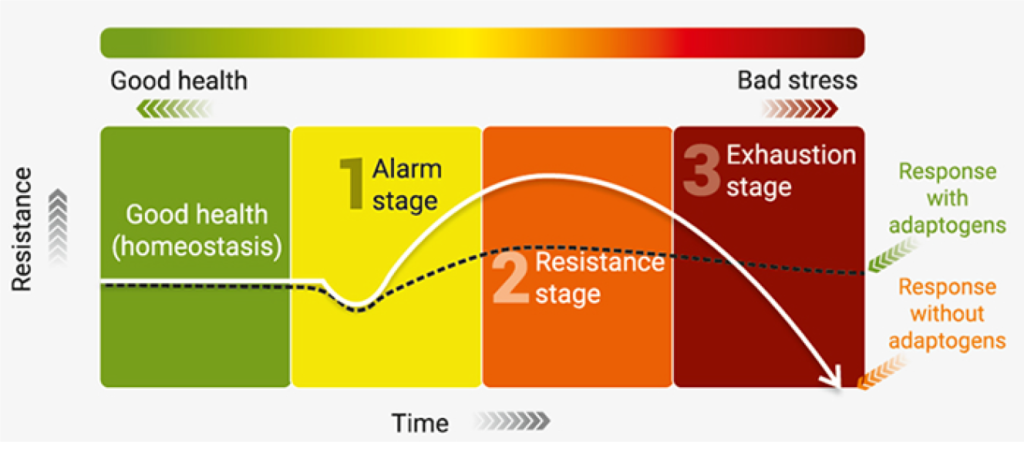The Holy Grail for family caregivers is learning how to find calm in the chaos. Right now, that search feels even more challenging in the midst of the coronavirus pandemic, social justice concerns and protests, and economic uncertainty. As these life stressors persist, it grows harder for caregivers to remain resilient and achieve post-traumatic growth.
A recent Kaiser Family Foundation poll found 74 percent of Americans believe “the worst is yet to come” from the coronavirus, contributing to a rise in anxiety.1 For instance, the anxiety over public transportation and the possibility of contracting coronavirus is a major concern for caregivers. An IBM Institute for Business Value survey conducted in April found 1 in 5 respondents who regularly took public transportation such as subways, trains and buses said they would no longer travel using these means for health safety reasons.2
Anxiety is a reaction to actual and perceived stressful situations or the anticipation of stress.
Many assisted living and nursing homes enforce social distancing rules and no visitation guidelines which may remain in place for the foreseeable future. This social distancing has created increased guilt and grief for family caregivers isolated from loved ones. What’s more, the uncertainty over school and Adult Day Care re-openings in the fall coupled with a possible return to working in an office environment has Sandwich Generation caregivers – caring for both children and older loved ones simultaneously – wondering how they will manage.
Clinically, anxiety is a reaction to actual and perceived stressful situations or the anticipation of stress. The biological stress response is a survival mechanism meant to accelerate our energy in the short-term when facing a threat and then return to balance (what scientists call homeostasis). When our sympathetic nervous system is in a constant state of increased anticipatory stress response, the result is feelings of fatigue, frustration, irritability, depression and burn out.
Mars vs Venus and Learning to Step Off the GAS
Up until 2000, most stress and anxiety research focused on male populations.3 As a result, we are culturally primed to think about the classic stress “fight or flight” response, where our instincts to protect ourselves by escaping or conquering the threat is short lived, as a male stress response. Most recent stress research has included gender differences and researchers have coined the term “tend and befriend” meaning females focus on not just protecting themselves but others from harm (tend) and often create or join social circles to maximize resource protection (befriend). 4
When we think about the millions of Sandwich Generation of family caregivers the “tend and befriend” model of stress response becomes an “a ha” moment.
To help caregivers understand what is happening in the body with chronic stress and anxiety we turn to biologist Hans Selye who identified the general adaptation syndrome (GAS) theory in 1936.5 He outlined three stages of stress: alarm, resistance and exhaustion.

Alarm – The stressor appears and we react. The heart rate increases, adrenal gland releases cortisol (the stress hormone) and a boost of adrenaline gives you energy (short term) to survive the threat.
Resistance – The body should begin to repair and recover. Systems should normalize but if there is a continued perceived or anticipatory threat, the body does not return to normal and the system isn’t recovering which leads to exhaustion, irritability, frustration and poor concentration.
Exhaustion – The longer the body remains in this stage, fatigue and prolonged anxiety weaken the immune system (it’s fighting wars within the body and is not vigilant to new threats such as coronavirus).
How to Create a Locus of Control Over Anxiety
Following is our 3-Step tool kit to support caregivers in identifying stress and anxiety and building a sense of control over stress and feelings of fear. Caregivers can consider these practices as part of their Caregiver Monday plan.
- Look at anxiety and stress as a transaction.
When we experience anxiety, it is easy to think in terms of external locus of control or things we cannot change. We need to remind ourselves that we also have internal locus of control, an ability to control our response to the stress we are experiencing. Tackle your response in two ways: Problem-focused coping activities such as going on a daily walk, becoming more organized, creating a to-do plan and asserting your needs. And, Emotion-focused coping such as exercise, meditation, mindfulness and seeking emotional social support by talking through a problem with an empathetic friend.
2. Take control over your time and schedule self-care “meetings.”
While many people continue to work from home (WFH), caregivers might find themselves lacking control over their routine. Consider this situation from a different perspective. WFH can also be a gift such as more flexibility throughout the day and no commute to work. In fact, it has given caregivers 9 days back a year (based on a 2018 average 27 minutes a day commute) to focus on other activities including more time for self-care.
3. Grab your tech tools.
Videochat has been a game changer in terms of keeping caregivers social distanced from older loved ones yet not socially isolated. As well, many apps are built to help cope with anxiety such as meQuilibrium, which is top-rated for developing resiliency to combat anxiety and depression. There are also mindfulness apps such as Headspace (offered free to anyone out of work) and Calm. All three of these apps are being embraced by employers to help employees, especially caregiving employees, cope through coronavirus.
Anxiety and stress are part of life but how we respond to these stressors makes all the difference. Caregiver Monday offers tools to help caregivers focus on ways to manage through times of increased anxiety. By remembering the GAS model of stress and using Caregiver Monday weekly practices to get back to balance in life, caregivers can help reduce anxiety, feel more connected, stay healthier, and be able to stay strong while supporting loved ones through uncertain and challenging times.
References
1 Kaiser Family Foundation (March 25-30, 2020). Health tracking poll. Kaiser Family Foundation, Washington, D.C. Retrieved from: http://files.kff.org/attachment/Topline-KFF-Health-Tracking-Poll-Early-April-2020.pdf
2 IBM Institute for Business Value (April, 2020). COVID-19 Is significantly altering U.S. consumer behavior and plans post-crisis. IBV Survey. Retrieved from: https://newsroom.ibm.com/2020-05-01-IBM-Study-COVID-19-Is-Significantly-Altering-U-S-Consumer-Behavior-and-Plans-Post-Crisis?mod=article_inline
3 Taylor, S. E., Klein, L. C., Lewis, B. P., Gruenewald, T. L., Gurung, R. A., & Updegraff, J. A. (2000). Biobehavioral responses to stress in females: tend-and-befriend, not fight-or-flight. Psychological review, 107(3), 411.
4 Turton, S., & Campbell, C. (2005). Tend and Befriend Versus Fight or Flight: Gender Differences in Behavioral Response to Stress Among University Students. Journal of Applied Biobehavioral Research, 10(4), 209–232. https://doi.org/10.1111/j.1751-9861.2005.tb00013.x
5 Johnson, D. C., & Johnson, L. B. (2010). Reinventing the stress concept. Ethical Human Psychology and Psychiatry, 12(3), 218-231.

0 Comments